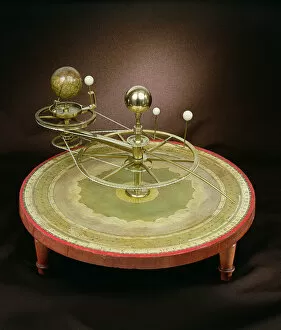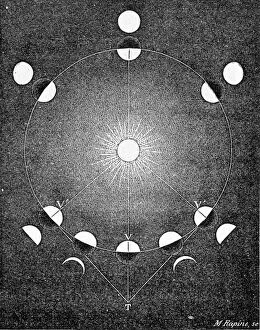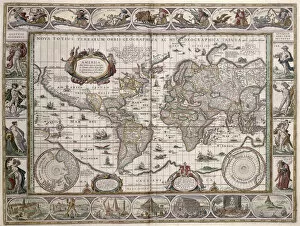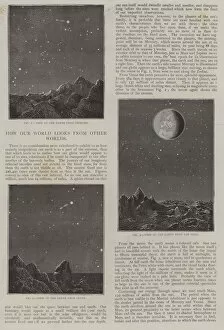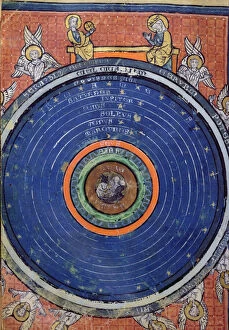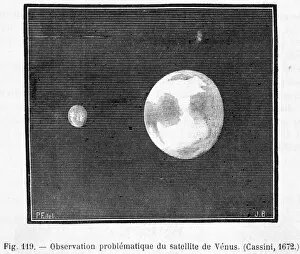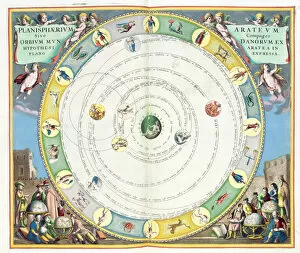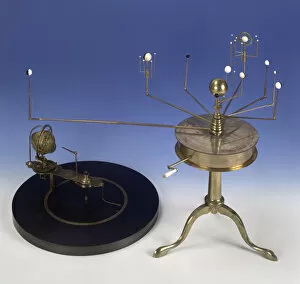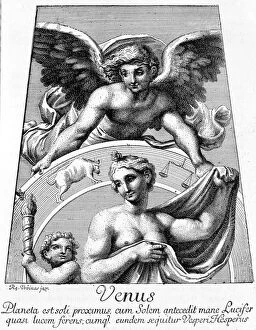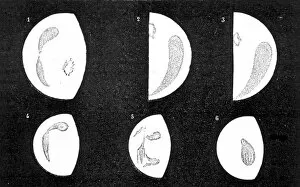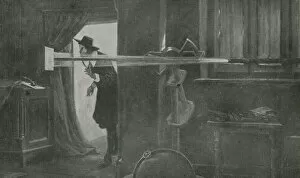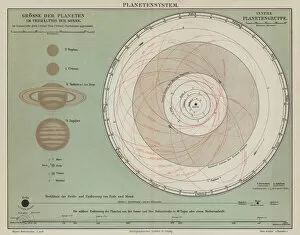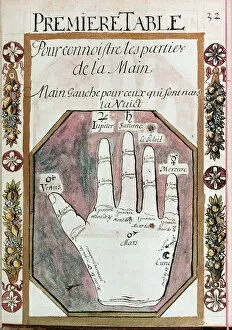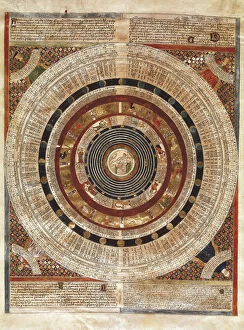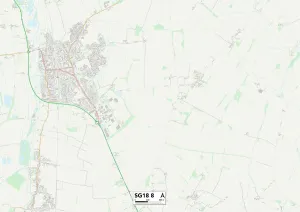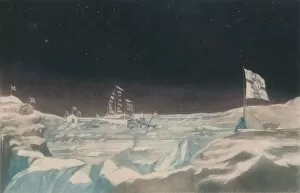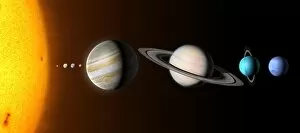Venus Collection (page 3)
Venus is the second planet from the Sun and is the hottest planet in our Solar System and has an atmosphere made up mostly of carbon dioxide and nitrogen
549 items
All Professionally Made to Order for Quick Shipping
-
Venus Collection
Venus is the second planet from the Sun and is the hottest planet in our Solar System and has an atmosphere made up mostly of carbon dioxide and nitrogen, with clouds of sulfuric acid droplets. Venus has no moons, but it does have a very slow rotation rate that causes its day to last longer than its year. Its surface temperature is over 400 degrees Celsius, making it inhospitable for life as we know it, explored by several spacecrafts such as Mariner 2 in 1962, Magellan in 1990 and more recently by ESA's Venus Express mission which ended in 2014. Scientists are still studying data from these missions to learn more about this mysterious planet's atmosphere and geology. The exploration continues today with plans for future missions to explore its surface and atmosphere further.
+
Our beautiful pictures are available as Framed Prints, Photos, Wall Art and Photo Gifts
The Venus collection from Media Storehouse offers a wide range of high-quality prints and products featuring the planet Venus, one of the most fascinating celestial bodies in our solar system. Our collection includes wall art, framed prints, photo prints, canvas prints, jigsaw puzzles, and greeting cards that showcase stunning images captured by NASA's spacecraft and other space exploration missions. From breathtaking views of Venus' surface to artistic renditions of its unique atmosphere and cloud formations, our collection has something for everyone interested in astronomy or space exploration. Whether you're looking to decorate your home or office with beautiful artwork or want to give a unique gift to someone special who shares your passion for science and space travel, the Venus collection is sure to impress. With its exceptional quality and attention to detail, each product in our collection is designed to provide an immersive experience that transports you into the awe-inspiring world of planetary science.
+
What are Venus (Planets Space Exploration Science) art prints?
Venus art prints are high-quality reproductions of artistic representations of the planet Venus, created by talented artists and photographers. These prints showcase the beauty and mystery of our neighboring planet through stunning imagery that captures its unique features, such as its thick atmosphere and volcanic landscapes. These art prints are perfect for anyone interested in space exploration or science, as well as those who simply appreciate beautiful artwork. They make great additions to any home or office decor, adding a touch of sophistication and intrigue to any room. Whether you're looking for a striking piece to hang on your wall or a thoughtful gift for someone special, Venus art prints from Media Storehouse offer an excellent selection of options to choose from. With their exceptional quality and attention to detail, these prints are sure to impress even the most discerning art enthusiasts.
+
What Venus (Planets Space Exploration Science) art prints can I buy from Media Storehouse?
We offer a wide range of Venus art prints that are perfect for space enthusiasts and lovers of astronomy. These prints showcase the beauty and mystery of this planet, with stunning images captured by NASA's spacecrafts and rovers. Some popular Venus art prints available at Media Storehouse include high-resolution photographs of the planet's surface, as well as artistic renderings that depict its unique features such as its thick atmosphere and volcanic activity. You can also find vintage illustrations from old astronomy books, which offer a historical perspective on our understanding of Venus. Whether you're looking for a striking piece to decorate your home or office, or simply want to add to your collection of space-themed artwork, we have something for everyone. With their vast selection of high-quality prints in various sizes and formats, you're sure to find the perfect Venus print that suits your taste and budget.
+
How do I buy Venus (Planets Space Exploration Science) art prints?
To buy Venus art prints from Media Storehouse, you can browse our online collection of artwork featuring the planet Venus. Once you have found a print that you like, simply add it to your cart and proceed to checkout. You will need to provide your shipping and billing information, as well as choose a payment method. We offer a wide variety of sizes and framing options for their prints, so be sure to select the one that best fits your needs. We also offer international shipping for those outside of the UK. Whether you are looking for a stunning piece of wall art or a unique gift for an astronomy enthusiast, we have plenty of options available. With high-quality printing and fast turnaround times, they make it easy to bring beautiful images of Venus into your home or office space.
+
How much do Venus (Planets Space Exploration Science) art prints cost?
We offer a range of Venus art prints that vary in price depending on the size and type of print. Our collection includes high-quality photographic prints, canvas prints, framed prints, and poster prints featuring stunning images of the planet Venus captured by NASA's space exploration missions. Each print is produced using state-of-the-art printing technology to ensure exceptional clarity and detail. Our Venus art prints are perfect for anyone interested in astronomy or space exploration science. They make great additions to any home or office decor and can be used as educational tools for schools and universities. We take pride in offering affordable prices without compromising on quality so that everyone can enjoy these beautiful works of art. Whether you're looking for a small poster print or a large canvas print, we have something to suit every budget and taste. Browse our collection today to find your perfect Venus art print.
+
How will my Venus (Planets Space Exploration Science) art prints be delivered to me?
We take great care in delivering your Venus art prints to you. We use high-quality packaging materials to ensure that your print arrives in perfect condition. Depending on the size and quantity of your order, we may ship it using either a flat pack or a tube. For smaller orders, we typically use a flat pack which is designed to protect the print during transit. The print will be carefully wrapped in acid-free tissue paper before being placed inside a sturdy cardboard envelope with additional protective padding. For larger orders or prints that are too large for our standard flat packs, we use tubes instead. These tubes are made from durable materials and provide excellent protection against damage during shipping. Regardless of how your order is shipped, you can rest assured that it will arrive safely and securely at its destination thanks to our careful attention to detail when it comes to packaging and delivery.

